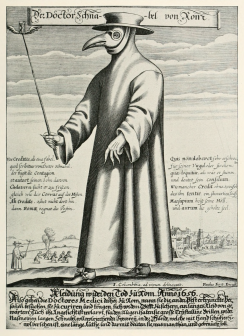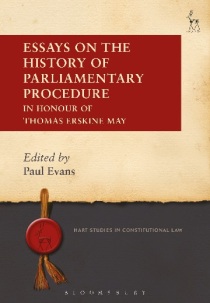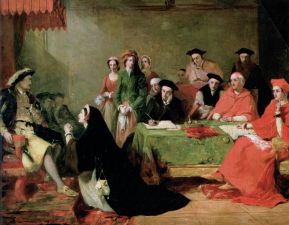Infectious and communicable diseases have been affecting humans for many thousands of years and ancient populations suffered many of the diseases our modern society is inflicted with, for example a 2008 study recently concluded that Tuberculosis is at least 9,000 years old from an analysis of ancient skeletons. However, it is only since the rise of agriculture and cultivation 11,000 years ago, and the associated wider mixing of communities and establishment of trade routes, that infectious diseases have had the channels available to more readily spread across populations as a whole.

Hippocrates (credit: Wikipedia)
The word epidemic originates around 2,500 years ago and the ancient Greek physician Hippocrates prominently used it in his set of books ‘Epidemics’ as an adjective to mean a disease “which circulates or propagates in a country” and its exact meaning and usage has evolved over time. The first recorded usage of the word pandemic is much later in Harvey’s ‘Anatomy of Consumptions’ (1666), its origin taken from the ancient Greek ‘pan’ to mean ‘all’ and ‘demos’ meaning ‘people/country’ and its definition as a noun is now commonly accepted to be “an outbreak of a disease that occurs over a wide geographic area and affects an exceptionally high proportion of the population” (Meriam-Webster). Incidentally, Harvey suggested preventative measures for pandemic diseases, two of which were for an individual to “walk daily in a pleasant, airy and umbragious [shady] garden, park or field” and eat less “flesh-meat”, meaning animals.
The first detailed account of a pandemic in global history is the disease that reached and spread through Athens (believed to have originated near Ethiopia) in 430 BC, the symptoms and effect of which were recorded by the Greek historian Thucydides. It is believed to have killed one third of the population of ancient Athens. The symptoms comprised fever, inflammation of the eyes and throat and difficulty breathing, amongst other things. Whilst there has been much debate amongst historians about what disease this pandemic involved, two prominent suggestions are Typhoid and Measles.

The Plague of Justinian (credit: Devastating Disasters)
Another significant early pandemic was the emergence of the Plague of Justinian in 541 AD in the Byzantine Empire and named after then emperor Justinian I. During the following two centuries, it spread throughout the world across a number of outbreaks, likely first hitting Britain in the year 597 AD, at that time attributed to travellers from abroad and their attempts to convert pagan Britain to Christianity. A further outbreak occurred in 664 (later known as ‘The Yellow Plague’) which may have killed one third of the population. Anglo-Saxon monk-historian Bede in his ‘Ecclesiastical History’ states that this plague began on 1 May 664 and coincided with a total solar eclipse. The Yellow Plague may have been viewed at the time as an omen of dire times to come and in the following centuries may have been re-framed by religious authority figures as a communal punishment for transgression against God’s laws and due to the paganism of the British people at that time. Scientists have recently concluded that it is likely that the disease of Justinian’s Plague was caused by the same bacteria that caused the very well-known pandemic Black Death in Europe in the 14th Century.

A Black Death plague doctor (credit: Wikipedia).
The European outbreak of the Black Death began in Sicily in October 1347 and, prior to the start of the Black Death in England in 1348, the vast majority of English epidemics since 664 (in the wider sense) were famine-sickness related and were a relatively common but less impactful occurrence. The Black Death’s impact was like nothing the world had seen and is believed to have entered Britain in August 1348 and quickly spread to London by the end of the year, leading Parliament to be prorogued on 1 January 1349. The disease ravaged the country and drastically thinned the population by an estimated 30-40% over the course of 1349. In response to a sudden loss of workers, King Edward III issued the Ordinance of Labourers on 18 June 1349 which stated that all those under the age of 60 must work and employers could not pay, nor employees demand, wages that exceeded pre-Black Death (1346) amounts. Generally seen as ineffective in a practical sense, Parliament tried to reinforce the Ordinance by passing the Statute of Labourers in 1351 which is widely considered the origin of English labour law. Again, practically this did not work because workers were now at a premium. Farm wages in 1351 were two or three times the amount of pre-Black Death wages and generally farming wages on the whole doubled between 1350 and 1450. These restrictive labour laws were also a significant factor in the cause of the Peasants’ Revolt of 1381 which had a number of wide-ranging impacts on Britain’s societal and class structure. Instances of the bubonic plague occurred in England (on lesser scales) throughout the next two centuries and lastly affected England in 1666. Whilst quarantining in the time of the Black Death had been followed informally at a personal level, it was not until the Quarantine Act of 1710 where the quarantining of incoming ships and crews to prevent the plague travelling from country to country was formally introduced. A number of further Quarantine Acts followed introducing various procedures and quarantine mechanisms, eventually being repealed by the Public Health Act of 1896.
A number of global pandemics have affected the UK, ranging from Smallpox across the 16th and 17th centuries, various outbreaks of the bubonic plague, cholera and influenza and more recently the Spanish Flu of 1918-19 and Swine Flu of 2009-10, amongst others. Responses to some of which have been direct and indirect catalysts for changes in English law. The response to the current global pandemic (Novel Coronavirus (COVID-19)) is a prime example of such legal changes.

Global Pandemic (credit: Axios)
Particularly severe cholera outbreaks in 1831-32 brought to the forefront of people’s minds the poor conditions of sanitation in the cities of the UK. Eventually, following consultation and papers for reform, this led to the introduction of the Public Health Act 1848 which introduced a Central Board of Health whose remit was improving supplies of water, drainage and sewerage, as well as regulating the country’s environmental health with local authorities being responsible for practical implementation. Whilst this initial Act was limited in its scope, a more comprehensive Public Health Act 1875 was later passed which also required each local authority to have a medical and sanitary officer whose powers extended to isolating patients in hospital, requiring the disinfection of property and belongings, suspension of schools and temporary closure of businesses. The key principles of the late 19th Century for improving public health were adequate sewers, removal of rubbish and clean drinking water.
A particularly bad pandemic of Smallpox in 1870-1875 led to the introduction of other relevant pandemic laws of note, being the Vaccination Acts 1885, 1898 and 1907 which required compulsory vaccination. These Acts were met with much opposition as there was fiery debate at the time about the causes of infectious diseases and the effectiveness of vaccines.
Supplementing these Acts were the Infectious Disease (Notification) Acts of 1889 and 1899 which required General Practitioners and people generally to report cases of infectious diseases to the local authority; failure to do so would incur a fine of up to 40 shillings. Over the following decades, various specific health Acts were introduced, prominently among them being the 1936 and 1961 Acts which built on and reiterate the provisions of the older Public Health Acts.
The bedrock of English law relating to infectious diseases specifically is the Public Health (Control of Diseases) Act 1984 which modernises and extends many of the general powers described above that appeared in the Public Health Act 1875. This Act, together with a large number of supplementary Acts and regulations, is what gives the Government the authority to take the recent actions they have in response to Covid-19 (e.g. closing of non-essential businesses). With the reorganisation of the National Health Sefvice in 1974 and 1990, the responsibility for relevant community healthcare moved from local authorities to the National Health Service although legal responsibility for infectious diseases still remained with the local authorities which made the performance of certain duties in this respect more difficult, and by whom, ambiguous.

Covid-19 (credit: New Scientist)
The most recent pandemic which is rapidly spreading across the world is Covid-19 (originating in Wuhan, China in late 2019) which as at 26 March 2020, has infected 491,180 people across the world and caused 22,165 deaths. In response to the pandemic Parliament has passed, in force as of 25 March 2020, the Coronavirus Act 2020. This Act defines coronavirus to be severe acute respiratory syndrome coronavirus 2 (SARS-Cov-2) and the coronavirus disease means Covid-19. This Act grants wide powers to the police to suspend public gatherings, to detain people suspected to be infected by Covid-19 and for the Government to intervene in a number of industries to limit the spread of Covid-19. Related regulations are The Health Protection (Coronavirus) Regulations 2020 which came into force on 10 February 2020 which supplement the provisions of the Public Health (Control of Diseases) Act 1984. The regulations allow for the designation of certain buildings as isolation facilities and for people to be kept in isolation where there is a reasonable risk of spreading Covid-19. The Coronavirus Act 2020 has a 2 year time limit (25 March 2022) and can be extended by 6 months at government ministerial discretion, although the Act is subject to 6 monthly renewal by Parliament. It is apparent that the UK Government felt they needed the powers afforded by this additional legislation to provide an effective legal framework for its response to Covid-19. This may have been due to the out-of-date nature of the law relating to infectious diseases and public health generally, the framework for which dates back to the mid-19th Century.
Given provisions in the Covid-19 legislation to delay or prevent the eviction of residential and business tenants from their properties and supporting employers to pay their employees 80% of their wages if they cannot work due to Covid-19, it is probable that a post-Covid-19 UK will face difficult legal and ethical questions regarding the extent to which certain laws should be amended for the public good generally. There will undoubtedly be a knock-on effect on the laws regulating a number of industries and workplaces and relating to issues affecting us all. The Covid-19 pandemic and the UK Government’s response to it will hold a clear mirror up to our laws and societal structure. There will be permanent changes to both but, for the moment, it is not yet known the extent to which the Law of Pandemics will become the Law of the Land.

 The past two hundred years have seen the transformation of public international law from a rule-based extrusion of diplomacy into a fully-fledged legal system. Landmark Cases in Public International Law examines decisions that have contributed to the development of international law into an integrated whole, whilst also creating specialised sub-systems that stand alone as units of analysis. The significance of these decisions is not taken for granted, with contributors critically interrogating the cases to determine if their reputation as ‘landmarks’ is deserved. Emphasis is also placed on seeing each case as a diplomatic artefact, highlighting that international law, while unquestionably a legal system, remains reliant on the practice and consent of states as the prime movers of development.
The past two hundred years have seen the transformation of public international law from a rule-based extrusion of diplomacy into a fully-fledged legal system. Landmark Cases in Public International Law examines decisions that have contributed to the development of international law into an integrated whole, whilst also creating specialised sub-systems that stand alone as units of analysis. The significance of these decisions is not taken for granted, with contributors critically interrogating the cases to determine if their reputation as ‘landmarks’ is deserved. Emphasis is also placed on seeing each case as a diplomatic artefact, highlighting that international law, while unquestionably a legal system, remains reliant on the practice and consent of states as the prime movers of development. 8 February 2015 marked the 200th anniversary of the birth of Thomas Erskine May. May is the most famous of the fifty holders of the office of Clerk of the House of Commons. His continued renown arises from his Treatise upon the Law, Privileges, Proceedings and Usage of Parliament, first published in 1844 and with its 25th edition currently in preparation. It is known throughout those parts of the world that model their constitutional arrangements on Westminster as the ‘Bible of Parliamentary Procedure’. This volume celebrates both the man and his book. Bringing together current and former Clerks in the House of Commons and outside experts, the contributors analyse May’s profound contribution to the shaping of the modern House of Commons, as it made the transition from the pre-Reform Act House to the modern core of the UK’s constitutional democracy in his lifetime. This is perhaps best symbolised by its enforced transition between 1834 and 1851 from a mediaeval slum to the World Heritage Palace of Westminster, which is the most iconic building in the UK.
8 February 2015 marked the 200th anniversary of the birth of Thomas Erskine May. May is the most famous of the fifty holders of the office of Clerk of the House of Commons. His continued renown arises from his Treatise upon the Law, Privileges, Proceedings and Usage of Parliament, first published in 1844 and with its 25th edition currently in preparation. It is known throughout those parts of the world that model their constitutional arrangements on Westminster as the ‘Bible of Parliamentary Procedure’. This volume celebrates both the man and his book. Bringing together current and former Clerks in the House of Commons and outside experts, the contributors analyse May’s profound contribution to the shaping of the modern House of Commons, as it made the transition from the pre-Reform Act House to the modern core of the UK’s constitutional democracy in his lifetime. This is perhaps best symbolised by its enforced transition between 1834 and 1851 from a mediaeval slum to the World Heritage Palace of Westminster, which is the most iconic building in the UK. Divorce is perhaps the civil legal issue which most grabs the attention of modern society and one does not have to look far to see high profile media coverage of celebrity divorces and the intrigue surrounding them. Many people have a personal experience of divorce, either of their own marriage or of the marriage of a close relative or friend. Given that 42% of marriages in England and Wales now end by divorce and the average duration of marriages is 11.7 years (Office for National Statistics), it is surprising that divorce has only relatively recently become easier to obtain and for many centuries was first a legal and then a practical impossibility.
Divorce is perhaps the civil legal issue which most grabs the attention of modern society and one does not have to look far to see high profile media coverage of celebrity divorces and the intrigue surrounding them. Many people have a personal experience of divorce, either of their own marriage or of the marriage of a close relative or friend. Given that 42% of marriages in England and Wales now end by divorce and the average duration of marriages is 11.7 years (Office for National Statistics), it is surprising that divorce has only relatively recently become easier to obtain and for many centuries was first a legal and then a practical impossibility.
 This volume explores the nature of intellectual property law by looking at particular disputes. All the cases gathered here aim to show the versatile and unstable character of a discipline still searching for landmarks. Each contribution offers an opportunity to raise questions about the narratives that have shaped the discipline throughout its short but profound history. The volume begins by revisiting patent litigation to consider the impact of the Statute of Monopolies (1624). It continues looking at different controversies to describe how the existence of an author’s right in literary property was a plausible basis for legal argument, even though no statute expressly mentioned authors’ rights before the Statute of Anne (1710).
This volume explores the nature of intellectual property law by looking at particular disputes. All the cases gathered here aim to show the versatile and unstable character of a discipline still searching for landmarks. Each contribution offers an opportunity to raise questions about the narratives that have shaped the discipline throughout its short but profound history. The volume begins by revisiting patent litigation to consider the impact of the Statute of Monopolies (1624). It continues looking at different controversies to describe how the existence of an author’s right in literary property was a plausible basis for legal argument, even though no statute expressly mentioned authors’ rights before the Statute of Anne (1710). Landmark Cases in Criminal Law
Landmark Cases in Criminal Law Landmark Cases in Public Law
Landmark Cases in Public Law